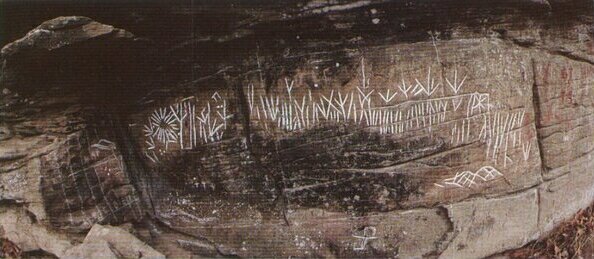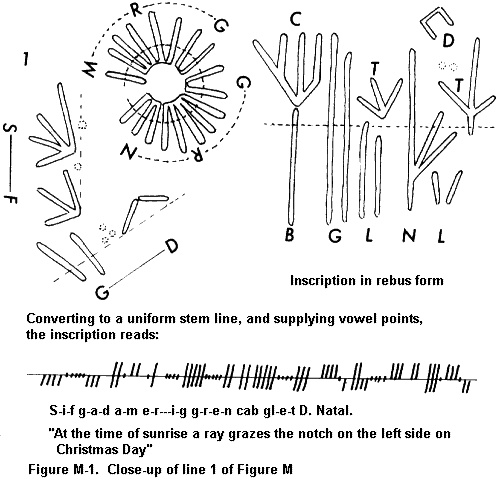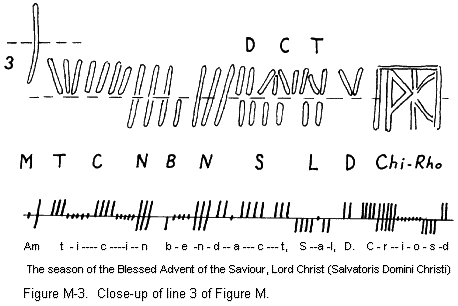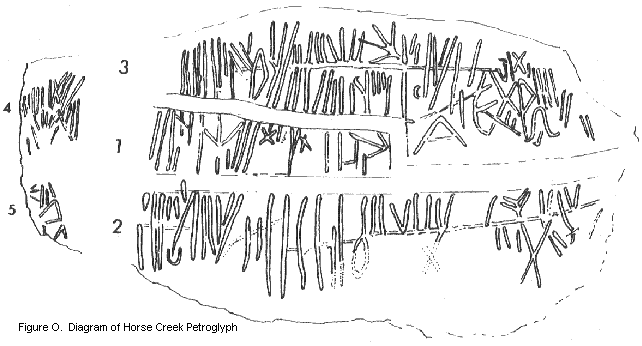
Παρασκευή 25 Ιανουαρίου 2013
ORTHODOX IN DIXIE
Orthodox in Dixie" is a documentary about the Eastern American Diocesan parishes of the Russian Orthodox Church Outside of Russia in South Carolina. The film is a production of the Media Office of the Eastern American Diocese - written, narrated, and produced by Reader Peter Lukianov, together with Executive Producer Reader Gregory Levitsky.
"Orthodox in Dixie" examines the lives of the clergy and faithful of these parishes, and takes a look at what a theoretical "Orthodox South Carolina" would look like.
If you enjoy this film, please consider making a donation to the Eastern American Diocese of ROCOR, so that more such films can be produced in the future. For more information, please visit www.eadiocese.org.
The Mother of God
The Most-Holy Theotokos and Ever-Virgin Mary.
In the theology and piety of the Orthodox Church, a special place of honor is given to the Mother of God the Most-Holy Theotokos and Ever-Virgin Mary, who is reverenced by the Orthodox as being more honorable than the Cherubim and more glorious, beyond compare, than the Seraphim. As Orthodox we style her as the most exalted among God's creatures; but we do not regard her as some sort of goddess, the 4th Person of the Trinity, as some accuse us; nor do we render her the worship due God alone. Just as with the Holy Icons, the veneration due Mary is expressed in quite different words in the Greek writings of the Fathers than that due God.
At many of the Divine Services, the Deacon exclaims: Commemorating our Most-Holy, Most-Pure, Most-Blessed and Glorious Lady Theotokos and Ever-Virgin Mary with all the Saints.... And here we can see three basic truths expressed concerning her.
The Virgin Mary is honored because she is Theotokos the Mother of God not of His divinity, but of His humanity, yet of God in that Jesus Christ was, in the theology of the Church, both God and Man, at one and the same time, in the Incarnation. Therefore, the honor given Mary is due to her relationship to Christ. And this honor, rather than taking away from that due God, makes us more aware of God's majesty; for it is precisely on account of the Son (Himself God) that she is venerated. Of times, when men refuse to honor Mary, it is because they do not believe in the cause of her veneration the Incarnation of the Second Person of the Trinity.
We also speak of the Theotokos as being Ever-Virgin, which was officially proclaimed at the 5th Ecumenical Council (Constantinople 553; the dogma concerning Mary as being Theotokos was proclaimed in 431 at the 3rd Ecumenical Council in Ephesus). This notion does not actually contradict Holy Scripture, as some would think. And His mother and His brothers came; and standing outside they sent to Him and called Him (Mark 3:31). Here the use of the word brothers in the original Greek can mean half-brother, cousin, or near relative, in addition to brothers in the strict sense. The Orthodox Church has always seen brothers here as referring to His half-brothers.
If Mary is honored as Theotokos, so too, she is honored because she is Panagia All-Holy. She is the supreme example of the cooperation between God and Man; for God, Who always respects human freedom, did not become incarnate without her free consent which, as Holy Scripture tells us, was freely given: Behold, I am the handmaid of the Lord; let it be to me according to your word (Luke 1:38). Thus Mary is seen by the Church as the New Eve (as Christ is the New Adam) whose perfect obedience contrasted the disobedience of the First Mother, Eve, in Paradise. As St. Irenaeus says, the knot of Eve's disobedience was loosed through the obedience of Mary; for what Eve, a virgin, bound by her unbelief, that Mary, a virgin, unloosed by her faith [Against the Heresies, III, xxii, 4],
As All-Holy and Most-Pure, Mary was free from actual sin, but, in the opinion of most Orthodox theologians, although not dogmatized by the Church, she did fall under the curse of Original Sin as does all mankind. For this reason by virtue of her solidarity with all humanity the Theotokos died a bodily death. Yet, in her case, the resurrection of the body had been anticipated; and she was assumed body and soul into Heaven; and her tomb was found empty an event celebrated in the Feast of the Falling-Asleep (or Dormition) of the Most-Holy Theotokos (Aug. 15). Thus, as the hymns of that Feast proclaim, she has passed from earth to heaven, beyond death and judgment, living already in the age to come. She enjoys now the same bodily glory all of us hope to share one day.
Whereas the Church has officially proclaimed as dogmas the doctrines concerning the Trinity and the Incarnation, the glorification of the Mother of God belongs to the Inner Tradition of the Church. As the noted Orthodox theologian, Vladimir Lossky writes: It is hard to speak and not less hard to think about the mysteries which the Church keeps in the hidden depths of her inner consciousness.... The Mother of God was never a theme of the public preaching of the Apostles; while Christ was preached on the housetops, and proclaimed for all to know in an initiatory teaching addressed to the whole world, the mystery of His Mother was revealed only to those who were within the Church.... It is not so much an object of faith as a foundation of our hope, a fruit of faith, ripened in Tradition. Let us therefore keep silence, and let us not try to dogmatize about the supreme glory of the Mother of God [Panagia, in The Mother of God, ed. E.L. Mascall, p.35].
Appellations of the Theotokos.
Ark.
The Theotokos is often called an Ark, for the Glory of God settled on her, just as the Glory of God descended on the Mercy Seat of the Old Testament Ark of the Covenant (Ex. 25:10-22).Aaron's Rod.
Just as Aaron's Rod sprouted miraculously in the Old Testament, so too, the Theotokos has budded forth the Flower of Immortality, Christ our God (Num. 17:1-11).Burning Bush.
On Mt. Sinai, Moses saw the Bush that was burning, but was not consumed. So too, the Theotokos bore the fire of Divinity, but was not consumed (Ex. 3:1-6).(Golden) Candlestick.
In the Old Testament Tabernacle, there were found in the Sanctuary golden candlesticks. The Theotokos is the Candlestick which held that Light that illumines the world (Ex. 25:31-40).(Golden) Censer.
Just as the censer holds a burning coal, so too, the Theotokos held the Living Coal. In the Apocalypse, there stands an Angel before the Throne of God, swinging a censer, representing the prayers of the Saints rising up to God. This is also seen as a symbol of the Theotokos, for it is her prayers that find special favor before her Son.Cloud.
In the Exodus, the Israelites were led out of Egypt by a Cloud of Light, symbolizing the presence of God in their midst. So too, the Theotokos is a Cloud, bearing God within.Fleece.
In the book of Judges we read the account of the dew which appeared miraculously on Gideon's fleece (Judges 6:36-40). So too, the Dew Christ, appeared miraculously on the Living Fleece the Theotokos.Holy of Holies.
Into the Holy of Holies only the High Priest could enter. So too, the Theotokos is the Holy of Holies into which only the Eternal High Priest Christ entered (Heb. 9:1-7).Ladder.
In a dream Jacob saw a ladder ascending to Heaven, with Angels ascending and descending on it. The Theotokos is a Ladder, stretching from earth to Heaven, for on It God descended to man, having become incarnate.Mountain (from which a Stone was cut not by hand of man).
The Prophet Daniel saw a mountain, from which was cut a stone, not by the hand of man (Dan. 2:34, 45). This is a reference to the miraculous Virgin Birth which was accomplished without the hand of man.Palace.
The Theotokos was the Palace within which the King Christ our God dwelt.Pot.
[See Urn]Stem of Jesse.
In the Nativity Service, the Lord is referred to as the Rod from the Stem of Jesse (Is. 11:1), indicating His lineage from David, which was fulfilled through the Theotokos, who was a scion (or stem) of the line of David, the son of Jesse.Tabernacle.
The Tabernacle was the place where the Glory of God dwelt. So too, the Glory of God dwelt in the Theotokos the Living Tabernacle (Ex. 40:34).(Holy) Table.
This refers to the Holy Table (Altar Table) on which, at the Divine Liturgy, the Divine Food is offered. So too, the Theotokos is the Holy Table which bore the Bread of Life.Temple.
The Prophet Ezekiel speaks of the Temple whose East gate remains sealed, through which only the Lord, the God of Israel, has entered. This clearly prophesies the Virgin Birth of the Theotokos (Ez. 44:1-2).Throne.
The Theotokos is the Throne upon which Christ, the King of All, rested.(Golden) Urn.
In the Old Testament, the Ark of the Covenant contained within itself a golden urn filled with the heavenly manna. The Theotokos is the Urn which contained Christ, the Divine Manna (Heb. 9:1-7).Vine.
The Theotokos is the Vine which bore the Ripe Cluster (of Grapes), Christ our Lord.
Excerpt taken from "These Truths We Hold - The Holy Orthodox Church: Her Life and Teachings". Compiled and Edited by A Monk of St. Tikhon's Monastery. Copyright 1986 by the St. Tikhon's Seminary Press, South Canaan, Pennsylvania 18459.
To order a copy of "These Truths We Hold" visit the St. Tikhon's Orthodox Seminary Bookstore.
To order a copy of "These Truths We Hold" visit the St. Tikhon's Orthodox Seminary Bookstore.
The Incarnation and Peace Among Men
2013 Diocean Assembly-Memory Eternal Fr Myers-UDPATED
| |
January 19, 2013
As we prepare to gather at the Diocesan Pastoral Conference in a couple weeks, please remember to mark your calendars for the Diocesan Assembly this summer. The Assembly will be July 29 to Aug 1 in Jacksonville, FL.
| |
| |
January 19, 2013
Fr Jacob Myers, Rector of St John the Wonderworker in Atlanta, fell asleep in the Lord this evening at 8:17 pm. Please keep his wife Matushka Rebecca and their children in your prayers.
The funeral services will be held at St John the Wonderworker Orthodox Church (543 Cherokee AVE SE, Atlanta, GA 30311). At 3:00 pm, on Friday, January 25, Fr Jacob will arrive at the church and there will be a Panikhida. The Funeral Vigil for a Priest will be at 7:00 pm that evening. In the morning (Saturday, January 26th) the Funeral Divine Liturgy will be served at 9:00 am. There will be a procession to Greenwood Cemetery (1173 Cascade Circle SW, Atlanta, GA 30311) with the service of Burial and the Interment.
Everyone is welcome to come to the Greek Orthodox Cathedral of the Annunciation (2500 Clairmont Rd NE, Atlanta, GA 30329) for the reception following the burial and interment. If you are coming from out of town, a block of rooms are available down the street from the church at the Holiday Inn under the name Myers. 450 Capitol Avenue Southeast Atlanta, GA 30312 (404) 591-2000 If you would like to make a donation in Father Jacob's name, please make it to "Loaves and Fishes". Flowers are welcome to be sent to St. John's, or smaller arrangements to the home, for the family, if you prefer. May the memory of the Priest Jacob be eternal! |
DOS Chancellor Students at SVOTS
| |
January 22, 2013
VRev Fr Marcus C Burch, Chancellor of the Diocese of the South visited SVOTS students from the DOS on Friday, January 18 through Sunday, January 20. Accompanying Fr Marcus was VRev Fr Thomas Moore, the Dean of the Carolinas' Deanery of the DOS.
In addition to meeting with DOS Students Frs Marcus and Fr Thomas Moore attended the Fr Alexander Schmemann Memorial Lecture on Friday evening. During the visit Fr Marcus met those students and their wives who are finishing SVOTS this year to discuss placement possibilities. He also met with 2nd year students who are petitioning for ordination to begin discerning placement potential. Before Vigil on Saturday afternoon he met hosted a luncheon with all of the students. This provided an opportunity to meet with the first year students, all the spouses, and children. While there they discussed the following: 1) Process for placement within the DOS, 2) desire for all rising seniors to do a summer internship in a parish in the DOS between 2nd and 3rd year, 3) making assignment as a 2nd/Assistant for 1 to 3 years for all DOS graduates, 4) DOS Seminary Debt Service Program (DOS will service the student loans for seminarians who are assigned in the DOS during the duration of their assignment). Additionally, Fr Marcus met with Frs Chad Hatfield and Fr John Behr to discuss these programs and desires. While at SVOTS, they attended the Pahikhida for Fr Jacob Myers that was served Saturday afternoon before Vigil Saturday evening, and concelebrated with Seminary Clergy at Divine Liturgy on Sunday morning. | |
| http://www.dosoca.org/ |
Κυριακή 6 Ιανουαρίου 2013
ORTHODOX CELTIC MONKS, THE FIRST IN AMERICA?
By Fr. Alexey Young
Source: Orthodox Life, No. 1, 2001, p. 33-36.
|
For centuries it was firmly believed and taught that North America was discovered by Christopher Columbus. More recently, there has been general agreement that Norsemen or Vikings were probably on this continent around 1000 A.D. "But," as the editors of National Geographic magazine point out, "perhaps it was a group of shadowy, yet very real, Irish seafaring monks who predated even the Vikings by more than four centuries." [1] Indeed, there is evidence that this may be true.
In the twentieth century a number of scholars began to suspect that the early medieval saga known as the "Voyage of Saint Brendan the Abbot" (Navigatio Sancti Brendani Abbatis) was not a "pious fable" at all, but the narration of an actual journey - a voyage by St. Brendan and a number of monks from Ireland to the east coast of North America, complete with accounts of what we can now identify as volcanic eruptions in Iceland, an encounter with a whale, and icebergs.

Stamp, depicting St. Brendan discovering the Faroes and Iceland
Initially, this interpretation was dismissed because experts doubted that anyone could have crossed the Atlantic with the kind of primitive boat or leather-hulled "curragh" known to have been used by early Irish or Celtic sailors. They doubted, that is, until, in the 1970s, the British explorer, Timothy Severin, successfully crossed the ocean in a leather boat (a duplicate of St. Brendan's craft), proving "beyond doubt that the Irish monks could have sailed their leather boats to the New World before the Norsemen, and long before Columbus ...". Equally important, this showed that St. Brendan's voyage "was no mere splendid medieval fantasy, but a highly plausible tale ... founded upon real events and real people."[2]
Still, there was no actual evidence to show that any Europeans had been in North America as early as the sixth century, when Brendan's "Voyage" was said to have occurred.
And then, in 1982, a petroglyph - an inscription cut in the face of a cliff or rock - in Wyoming County, West Virginia, was recorded and identified. This site had been discovered in 1964, but it was not until 1970 that an archaeologist from the West Virginia Economic and Geological Survey studied it and concluded that this petroglyph (rock-carving) was at least five to seven hundred years old, if not older, and was in marked contrast to other known petroglyphs in the area. Twelve years later a prominent archaeologist with twenty-seven years of field experience, Robert L. Pyle, took a serious interest in the petroglyph. Dr. Pyle, who has a GS-9 rating as an archaeologist from the federal government and is authorized to do archaeological work on federal projects, had no particular agenda in mind - unlike Timothy Severin, who set out to prove that a primitive Celtic craft could make a trans-Atlantic voyage; Dr. Pyle simply wanted to scientifically and objectively determine, if possible, what this particular petroglyph was all about.
Chalked Wyoming County Petroglyph.
Credit: Gerald Ratliff
A prominent authority on ancient languages and an emeritus professor at Harvard, Dr. Barry Fell, was brought into the investigation. He concluded that these petroglyphs "appear to date from the6th-8th centuries A.D., and they are written in Old Irish language, employing an alphabet called Ogam, found also on ancient rock-cut inscriptions in Ireland ... [and in] a Dublin manuscript, known as the 'Ogam Tract,' composed by an unidentified monk in the fourteenth century." [3] The first surprise came when the message was deciphered:
"At the time of sunrise, a ray grazes the notch on the left side on Christmas Day, a Feast-day of the Church, the first seven of the [Christian] year, the season of the blessed advent of the Savior, Lord Christ. Behold, He is born of Mary, a woman." [4]
Three Celtic Chi Rho's (the Greek letters - "X" and "R" - for Christ) also appear on this petroglyph (far right).
The second surprise came when the investigators decided to test the inscription by calculating the Julian Calendar date for when the Feast of the Nativity would have fallen between 500 and 800 A.D. Thus, on December 22 (new style), 1982, they went to the site before dawn and watched and waited. Suddenly, as the sun came over a ridge, "a glimmer of pale sunlight struck the sun symbol on the left side of the petroglyph, and the rising sun soon bathed the entire panel in warm sunlight ... funneling through a three-sided notch formed by the rock overhang." [5]
Another inscription, called the Horse Creek Petroglyph (in Boone County, West Virginia), also yielded a Christian translation and the use of the Chi Rho.
Photograph of Horse Creek Petroglyph.
Credit: Arnout Hyde, Jr.
Of course, further investigation and study of this fascinating subject is warranted, and important tests are pending on some artifacts found at these sites. But for now, we can say that a case is slowly but surely building for the existence of Celts - most likely monks - on this continent long before any others came from the West.
This is of particular interest because Celtic Christians were also Orthodox Christians - belonging to the one, true, and universal Church of Christ before the West fell away from the Orthodox Church in the tenth century. Their spirituality, far from being the fashionable "New Age spirituality" that many of today's writers anachronistically project back on to the ancient Celts, was thoroughly Orthodox in teaching as well as monastic and ascetic in practice.
Indeed, Fr. Gregory Telepneff, in his fascinating and scholarly study, The Egyptian Desert in the Irish Bogs, concludes that Celtic Christianity actually reveals "significant Coptic* [i.e. Egyptian] influence of a specifically monastic kind." [6]
These archaeological "finds" in West Virginia and elsewhere, which seem to point to a Celtic and monastic presence on this continent more than one thousand years ago, provide an imperative for Christians (whether Orthodox or not) to examine the Orthodox West (particularly in the lives of the saints) as it was before the Great Schism. Because that authentic and rich flowering of Orthodoxy, especially in Celtic Orthodox Christianity, is characterized by both asceticism and holiness, it can be as nurturing to the soul as it was to believers a millennium and more ago.
**********************************
Footnotes:
source http://www.oodegr.com/english/brit_celt_orthodoxy/celts_america.htm |
Εγγραφή σε:
Αναρτήσεις (Atom)











